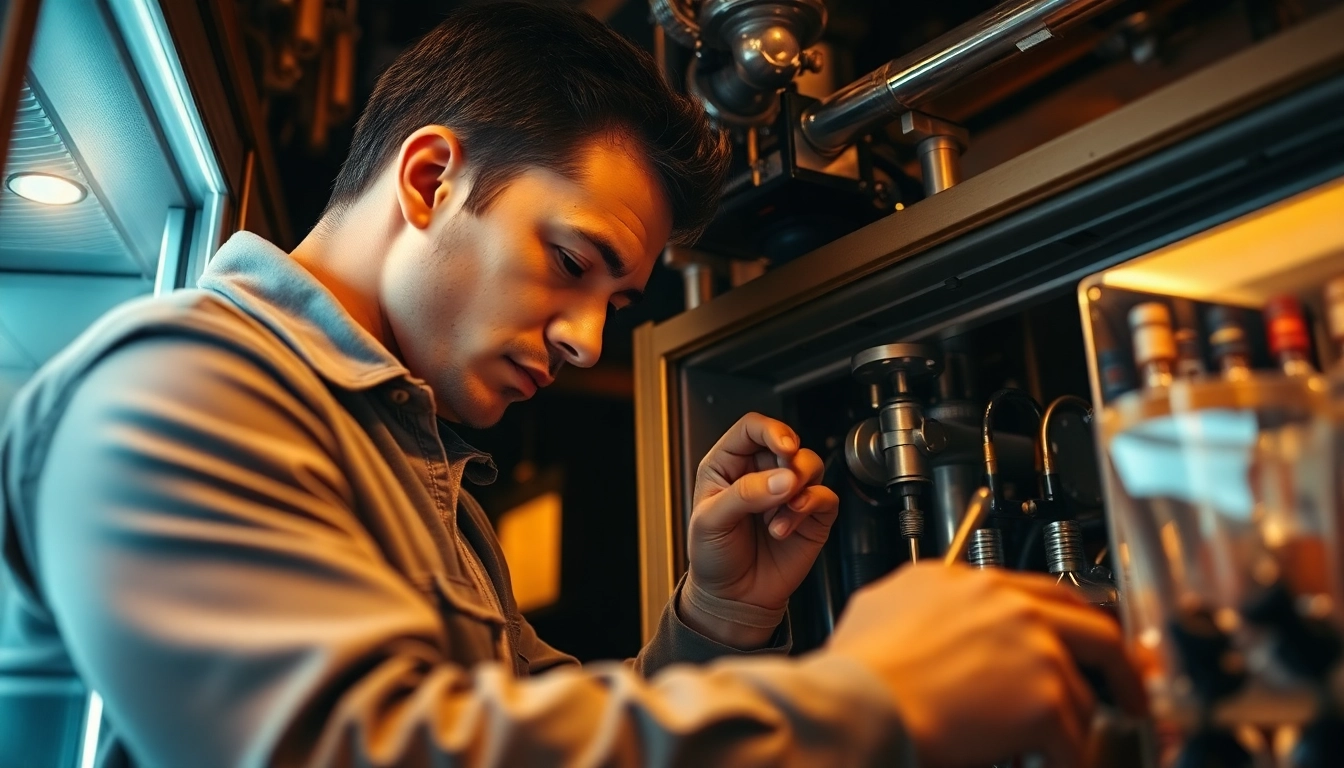Understanding Bar Refrigeration Systems
Bar refrigeration systems are a crucial component of any establishment that serves cold beverages. Whether it’s a bustling pub, a sleek cocktail bar, or a corner café, maintaining the integrity of the refrigeration system directly impacts product quality and customer satisfaction. In this article, we delve into the intricacies of bar refrigeration repair, covering everything from understanding system types to choosing the right repair service.
Types of Bar Refrigeration Equipment
Bar refrigeration equipment comes in various forms, each designed to serve specific functions within a hospitality setting. Here are the most common types:
- Under-Counter Refrigerators: Ideal for limited spaces, these units fit beneath the bar counter and are perfect for storing kegs or bottles within easy reach.
- Back Bar Coolers: These display units allow bartenders to stock and showcase drinks while ensuring they remain chilled. They typically feature glass doors for visibility.
- Keg Refrigerators: Specialized units designed to keep kegs at optimal temperatures. They often come with taps attached, making them perfect for breweries and bars serving draft beer.
- Iced Beverage Dispensers: Used for serving cold drinks directly, these units keep beverages chilled and ready for immediate service.
- Ice Machines: Essential for any bar, ice machines produce and store ice to keep drinks cool.
Common Issues in Bar Refrigeration
Bar refrigeration systems are not immune to issues, and understanding common problems can help in timely repairs. Some frequent issues include:
- Insufficient Cooling: Often caused by dirty condenser coils or a malfunctioning compressor, this issue can lead to warm drinks and dissatisfied customers.
- Leaking Refrigerant: If refrigerant leaks occur, it hampers cooling efficiency. Early detection is crucial as it can also pose safety hazards.
- Ice Buildup: Ice can accumulate in the evaporator coils, impeding airflow and reducing the unit’s efficiency.
- Noise Problems: Unusual sounds from the refrigeration system can indicate mechanical issues that need to be addressed.
- Electrical Failures: Problems with electrical components can disrupt operation entirely, leading to loss of inventory if not addressed quickly.
Signs You Need Bar Refrigeration Repair
Recognizing the signs that repair is needed can prevent more extensive damage and costly repairs. Here are some indicators:
- Inconsistent temperatures in refrigeration units.
- Condensation forming on the exterior of the unit.
- Increased energy bills without apparent reason.
- Visible wear and tear or rust on the unit’s exterior.
- Frequent cycling on and off without reaching the desired temperature.
Preventative Maintenance for Bar Refrigeration
Preventative maintenance is vital for the longevity and optimal performance of bar refrigeration systems. Implementing a regular maintenance schedule can significantly reduce the likelihood of breakdowns.
Regular Cleaning Procedures
Cleaning is the first step in maintenance. Regularly cleaning the interior and exterior of refrigeration units helps prevent buildups that could affect performance. Key areas to clean include:
- Condenser coils: Dirty coils can lead to overheating and inefficiency.
- Evaporator coils: Should be checked and cleaned to avoid ice buildup.
- Door seals: These need to be free of debris to ensure a proper airtight seal.
- Drain pans: Must be cleaned and checked for clogs to prevent leaks.
Key Components to Inspect
In addition to cleaning, various components should be regularly inspected:
- Thermostats: Ensure they are functioning correctly and calibrated.
- Refrigerant levels: Low refrigerant can lead to insufficient cooling.
- Electrical connections: Check for loose or corroded connections that could cause electrical failures.
- Fan motors: Ensure fans are operating smoothly to maintain airflow.
Frequency of Maintenance Checks
Maintenance checks should ideally be performed quarterly, but high-traffic establishments may benefit from monthly checks. Creating a maintenance schedule that’s tailored to your establishment’s needs ensures reliability.
Step-by-Step Guide to Bar Refrigeration Repair
Attempting repairs on your own can save costs, but it’s crucial to know when this is feasible and safe. Here’s a structured approach to bar refrigeration repair.
Tools Needed for Repairs
Before starting any repair, gather necessary tools. Basic tools include:
- Multi-meter for electrical diagnostics.
- Screwdrivers and wrenches for assembly/ disassembly.
- Refrigerant gauges for checking refrigerant levels.
- Vacuum pump and recovery machine for refrigerant recovery.
- Facilities for safely disposing of ice buildup and debris.
Basic Troubleshooting Techniques
Start troubleshooting by following these steps:
- Check the power supply. Ensure the unit is plugged in and the circuit breaker hasn’t tripped.
- Listen for unusual sounds or smells that might indicate specific issues.
- Inspect the thermostat settings to confirm they are set correctly.
- Examine condenser coils for dirt accumulation.
- Check airflow around the unit; ensure nothing is blocking vents.
When to Call a Professional
Certain situations warrant professional help, including:
- Refrigerant leaks which require specialized handling.
- Extensive electrical issues that pose safety hazards.
- Complex mechanical repairs that go beyond basic tools and troubleshooting.
- Regulatory compliance requirements for businesses.
Cost Considerations of Bar Refrigeration Repair
Understanding costs associated with bar refrigeration repair is crucial for budgeting and preventing future overhead costs. Several factors determine repair costs.
Understanding Repair Costs
Repair costs can vary significantly based on the issue’s severity, equipment type, and labor. On average, employers can expect to pay:
- Minor repairs: $100 – $300
- Major repairs: $300 – $1,000
- Component replacements (like compressors or evaporators): $1,000 and up
Preventing Expensive Breakdowns
Proactive maintenance is key to avoiding costly repairs. Regular maintenance check-ups can help identify minor issues before they escalate. Training staff on routine checks can also be beneficial.
Budgeting for Maintenance
Creating a dedicated budget for preventative maintenance can greatly enhance operational efficiency:
- Allocate 10% of the value of the equipment for annual maintenance.
- Set aside funds for unexpected repairs to reduce the financial strain.
Choosing the Right Service for Bar Refrigeration Repair
Selecting a reliable repair service is critical for maintaining bar refrigeration systems. Here are tips to effectively evaluate your options.
Evaluating Repair Services
When selecting a repair service, utilize the following criteria:
- Experience in commercial refrigeration repair, particularly in bars.
- Reputation within the industry—check online reviews and testimonials.
- Service guarantees or warranties offered on repairs.
- Response times for emergencies.
Questions to Ask Your Technician
When consulting with potential technicians, consider asking:
- Do you have experience with my specific type of refrigeration equipment?
- Can you provide a detailed estimate before starting repairs?
- What maintenance do you recommend after repairs?
- Are you licensed and insured for commercial refrigeration work?
Finding Local Bar Refrigeration Repair Services
Local services often provide more timely support. Utilize online directories, ask for referrals from other bar owners, or check with local hospitality associations to find reputable technicians.



